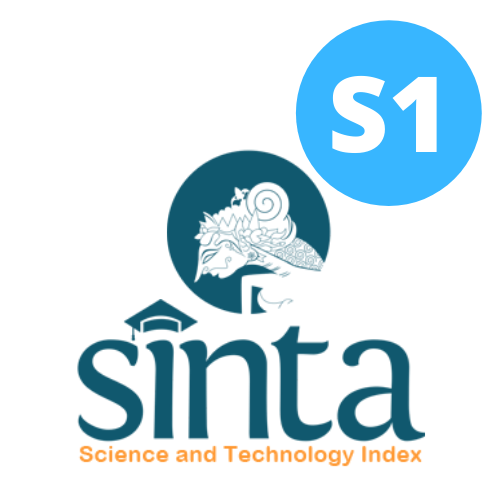Factors Related to The Incidence of Primary Dysmenorrhea in Adolescent Females at SMAIT Raflesia Depok in 2024
Faktor – Faktor yang Berhubungan dengan Kejadian Dismenore Primer pada Remaja Putri di SMAIT Raflesia Depok Tahun 2024

Downloads
Background: Adolescence marks the onset of puberty, during which physiological and hormonal changes occur. In female adolescents, one of the primary indicators of puberty is the initiation of menstruation. During the menstrual phase, some adolescents experience lower abdominal pain, known as dysmenorrhea. Various factors, including body fat percentage and nutrient intake, have been identified as contributors to dysmenorrhea.
Objectives: This study aimed to investigate the association between body fat percentage, fat intake, and the levels of iron, calcium, and magnesium intake on the incidence of primary dysmenorrhea among adolescent girls at SMAIT Raflesia Depok in 2024.
Methods: The study was conducted in February 2024 at SMAIT Raflesia Depok, utilizing a quantitative, cross-sectional design. The sample comprised 103 female students from grades X and XI, aged 14 to 17 years, selected through stratified random sampling. Study variables included body fat percentage, fat intake, iron intake, calcium intake, magnesium intake, and the incidence of primary dysmenorrhea. Data were analyzed using the chi-square test.
Results: Analysis revealed a significant association between iron intake (p-value=0.009), calcium intake (p-value=0.006), and magnesium intake (p-value=0.020) with the incidence of primary dysmenorrhea. However, no significant association was observed for body fat percentage (p-value=0.349) or fat intake (p-value=0.616).
Conclusions: This study highlights a significant association between the intake of iron, calcium, and magnesium and the occurrence of primary dysmenorrhea among adolescent girls at SMAIT Raflesia Depok in 2024. These findings underscore the importance of maintaining a healthy body fat percentage and ensuring adequate nutritional intake to reduce the risk of dysmenorrhea in this population.
WHO. Adolescent Health. (2023). https://www.who.int/health-topics/adolescent-health/#tab=tab_1
Breehl, L. & Caban, O. Physiology, Puberty. (2023). https://pubmed.ncbi.nlm.nih.gov/30521248/
Critchley, H. O. D. et al. Menstruation: Science and Society. Am. J. Obstet. Gynecol. 223, 624–664 (2020). https://doi.org/10.1016/j.ajog.2020.06.004
Smith, R. P. Scope of The Problems. in Dysmenorrhea and Menorrhagia 19–29 (Springer International Publishing, 2018). https://doi.org/10.1007/978-3-319-71964-1_2
Bernardi, M., Lazzeri, L., Perelli, F., Reis, F. M. & Petraglia, F. Dysmenorrhea and related disorders. F1000Research 6, 1645 (2017). https://doi.org/10.12688/f1000research.11682.1
Sari, H. & Hayati, E. Gambaran Tingkat Nyeri Dismenorea Pada Remaja Putri. BEST J. (Biology Educ. Sains Technol. 3, 226–230 (2020). https://doi.org/10.30743/best.v3i2.3284
Aktaş, D. The Relationships Between Primary Dysmenorrhea with Body Mass Index and Nutritional Habits in Young Women. J. Educ. Res. Nurs. 143–149 (2023). https://doi.org/10.14744/jern.2021.93151
Hidayah, N., Rahfiludin, M. Z. & Aruben, R. Hubungan Status Gizi, Asupan Zat Gizi dan Aktivitas Fisik dengan Siklus Menstruasi Remaja Putri Pondok Pesantren Salafiyah Kauman Kabupaten Pemalang Tahun 2016. J. Kesehat. Masy. 4, 444–537 (2016). https://doi.org/10.14710/jkm.v4i4.14284
Jesica, F. & Friadi, A. Hubungan Kadar Kortisol Dan Prostaglandin Maternal Dengan Persalinan Preterm Dan Aterm. J. Ilmu Keperawatan Dan Kebidanan 10, 21–29 (2019). https://doi.org/10.26751/jikk.v10i1.540
Fahimah, F., Margawati, A. & Fitranti, D. Y. Hubungan Konsumsi Asam Lemak Omega-3, Aktivitas Fisik dan Persen Lemak Tubuh dengan Tingkat Dismenore pada Remaja. J. Nutr. Coll. 6, 268 (2017). https://doi.org/10.14710/jnc.v6i4.18249
Wildayani, D., Lestari, W. & Ningsih, W. L. Hubungan Asupan Zat Besi dan Kalsium dengan Kejadian Dismenore pada Remaja Putri. JOMIS (Journal Midwifery Sci. 7, 138–147 (2023). https://doi.org/10.36341/jomis.v7i2.3383
Nurnaeni, N., Gita Ningrum, A. & Yanuar Annas, J. The Effect of Calcium on Decreasing Primary Dysmenorrhea Pain Intensity: Literature Review. Int. J. Res. Publ. 92, (2021). https://doi.org/10.47119/IJRP100921120222664
Yaralizadeh, M., Nezamivand-Chegini, S., Najar, S. & Namjoyan, F. Effectiveness of Magnesium on Menstrual Symptoms Among Dysmenorrheal College Students: A Randomized Controlled Trial . Int. J. Women’s Heal. Reprod. Sci. 1 (2021). https://doi.org/10.15296/ijwhr.2023.25
Wirenviona, R. & Cinthya, A. A. I. D. Edukasi Kesehatan Reproduksi Remaja. (2020). https://books.google.co.id/books?id=Ssf0DwAAQBAJ&lpg=PP1&hl=id&pg=PP1#v=onepage&q&f=false
Indrasari, O. & Sutikno, E. Faktor Yang Mempengaruhi Status Gizi Remaja Usia 16-18 Tahun. J. Kesehat. Indones. 10, 128–132 (2020). http://journal.stikeshb.ac.id/index.php/jurkessia/article/view/252/164
Rahayu, T. B. & Fitriana, D. Analisis Faktor-Faktor yang Mempengaruhi Status Gizi Remaja Putri. https://doi.org/10.30602/jvk.v6i1.158 (2020).
Telisa, I., Hartati, Y. & Haripamilu, A. D. Faktor Risiko Terjadinya Obesitas Pada Remaja SMA. Faletehan Heal. J. 7, 124–131 (2020). https://doi.org/10.33746/fhj.v7i03.160
Syafriani, S., Aprilla, N. & Z.R, Z. Hubungan Status Gizi dan Umur Menarche dengan Kejadian Dismenore pada Remaja Putri di SMAN 2 Bangkinang Kota 2020. J. Ners 5, 32–37 (2021). https://doi.org/10.31004/jn.v5i1.1676
Iswari, D. P., Surinati, I. & Mastini, G. Hubungan Dismenorea Dengan Aktivitas Belajar Mahasiswi PSIK FK UNUD Tahun 2014. COPING J. 2, (2014). https://jurnal.harianregional.com/coping/full-10780
Nofrianti, A., Pramono, A., Marfu’ah Kurniawati, D. & Tri Susilo, M. Hubungan Persen Lemak Tubuh, Aktivitas Fisik, dan Kebiasaan Konsumsi Kopi terhadap Tingkat Dismenorea pada Santriwati Usia 17-25 Tahun. - (2023). https://eprints2.undip.ac.id/id/eprint/16076/
Gustini, L., Lipoeto, N. I. & Utama, B. I. Hubungan Massa Lemak dengan Dismenore Primer pada Remaja Putri di Stikes Ceria Buana Bukittinggi. J. Kesehat. Andalas 6, 32–36 (2017). https://doi.org/10.25077/jka.v6i1.640
Tembhurne, S., Amritkaur & Mitra, M. Relationship between Body Mass Composition and Primary Dysmenorrhoea. Indian J. Physiother. Occup. Ther. - An Int. J. 10, 76 (2016). https://doi.org/10.5958/0973-5674.2016.00017.4
Ronny, Nur Alvionita Tianti Kusuma & Vidi Posdo A. Simarmata. Correlation Between Nutritional Status and Primary Dysmenorrhea based on Work Ability, Location, Intensity, Days of Pain, and Dysmenorrhea (Walidd) Score. World J. Biol. Pharm. Heal. Sci. 14, 046–062 (2023). https://doi.org/10.30574/wjbphs.2023.14.2.0184
Fahimah, F., Margawati, A. & Fitranti, D. Y. Hubungan Konsumsi Asam Lemak Omega-3, Aktivitas Fisik dan Persen Lemak Tubuh dengan Tingkat Dismenore pada Remaja. J. Nutr. Coll. 6, 268–276 (2017). https://doi.org/10.14710/jnc.v6i4.18249
Singh, K., Srivastava, D., Misra, R. & Tyagi, M. Relationship Between Primary Dysmenorrhea and Body Composition Parameters in Young Females. Int J Heal. Sci Res 5, 150–155 (2015). https://www.bodystat.com/content/60 Primary Dysmenorrhea and Body Composition Parameters in Young Females India 2015 QuadScan.pdf
Nagata, C., Hirokawa, K., Shimizu, N. & Shimizu, H. Associations of Menstrual Pain with Intakes of Soy, Fat and Dietary Fiber in Japanese Women. Eur. J. Clin. Nutr. 59, 88–92 (2005). https://doi.org/10.1038/sj.ejcn.1602042
Tahir, A. Pengaruh Asupan Makronutrien, Stres dan Kadar Prostaglandin (PGF2α) Urine terhadap Kejadian Dismenore pada Remaja. (2020). https://doi.org/10.1016/j.gaceta.2021.10.039.
Damayanti, A. N., Setyoboedi, B. & Fatmaningrum, W. Correlation Between Dietary Habits with Severity of Dysmenorrhea among Adolescent Girl. Indones. Midwifery Heal. Sci. J. 6, 83–95 (2022). https://doi.org/10.20473/imhsj.v6i1.2022.83-95
Wati, A. I. Relationship Between Intake of Fat, Calcium, Magnesium and Nutritional Status with Dismenore Primer Incident to Student of SMAN 9 Surabaya. GIZI UNESA 2, (2023). https://ejournal.unesa.ac.id/index.php/GIZIUNESA/article/view/50200
Gomez, E. & Jáuregui, I. Variables Emocionales y Food Craving: Influencia del Ciclo Menstrual. J. Negat. No Posit. Results 7, 28–63 (2022). https://dx. doi. org/10.19230/jonnpr. 4429
Nurul, R., Ermawati, E. & Amir, A. Hubungan Indeks Massa Tubuh (IMT) dengan Usia Menarche pada Siswi SMP Negeri 1 Padang. J. Kesehat. Andalas 5, (2016). https://doi.org/10.25077/jka.v5i3.575
Astrup, A. & Bügel, S. Overfed but Undernourished: Recognizing Nutritional Inadequacies/Deficiencies in Patients with Overweight or Obesity. Int. J. Obes. 43, 219–232 (2019). https://doi.org/10.1038/s41366-018-0143-9
Aini, R. N., Indriati, S. N. & Rahayu, L. S. Hubungan Antara Asupan Asam Lemak Omega-3 dan Vitamin B1 dengan Derajat Dismenorea pada Mahasiswi di Program Studi Ilmu Gizi UHAMKA. Ilmu Gizi Indones. 7, 163–172 (2024). https://doi.org/10.35842/ilgi.v7i2.480
Rahmawati, F. C. Hubungan Asupan Zat Besi dan Usia Menarche dengan Kejadian Dismenore pada Remaja Putri. J. Penelit. Inov. 2, 469–476 (2023). https://doi.org/10.54082/jupin.105
Hidayati, K. R., Soviana, E. & Mardiyati, N. L. Hubungan antara Asupan Kalsium dan Asupan Zat Besi dengan Kejadian Dismenore pada Siswi di SMK Batik 2 Surakarta. J. Kesehat. 9, 15–22 (2016). https://doi.org/10.23917/jk.v9i2.4580
Ligita, L. O. & Kumala, M. Hubungan Asupan Kalsium dengan Kejadian Dismenorea Primer pada Mahasiswi Fakultas Kedokteran Universitas Tarumanagara angkatan 2016. Tarumanagara Med. J. 2, 337–342 (2020). https://doi.org/10.24912/tmj.v3i1.9737
Aprilianti, C. & Ghia, A. Asupan Kalsium Dan Kejadian Dismenore Pada Remaja. J. Ilm. Permas J. Ilm. STIKES Kendal 10, 91–96 (2020). https://doi.org/10.33221/jikm.v10i03.853
Kuo, I. Y. & Ehrlich, B. E. Signaling in Muscle Contraction. Cold Spring Harb. Perspect. Biol. 7, a006023 (2015). https://doi.org/10.1101/cshperspect.a006023
Hudson, T. Using Nutrition to Relieve Primary Dysmenorrhea. Altern. Complement. Ther. 13, 125–128 (2007). https://doi.org/10.1089/act.2007.13303
Resmiati, R. Aktivitas Fisik, Magnesium, Status Gizi, Dan Riwayat Alergi Sebagai Faktor Determinan Dismenore. J. Endur. Kaji. Ilm. Probl. Kesehat. 5, 79–90 (2020). https://doi.org/10.22216/jen.v5i1.4670
Wahyuni, Y., Fasya, D. S. & Novianti, A. Analisis Perbedaan Asupan Kalsium, Magnesium, Zink, dan Aktivitas Fisik berdasarkan Kejadian Dismenorea pada Remaja Putri Atlet di SMA Negeri Ragunan. Ilmu Gizi Indones. 5, 71–80 (2021). https://doi.org/10.1684/mrh.2017.0419
Parazzini, F., Di Martino, M. & Pellegrino, P. Magnesium in The Gynecological Practice: A Literature Review. Magnes. Res. 30, 1–7 (2017). https://doi.org/10.1684/mrh.2017.0419
Balbi, C. et al. Influence of Menstrual Factors and Dietary Habits on Menstrual Pain in Adolescence Age. Eur. J. Obstet. Gynecol. Reprod. Biol. 91, 143–148 (2000). https://doi.org/10.1016/S0301-2115(99)00277-8
Murata, T., Dietrich, H. H., Horiuchi, T., Hongo, K. & Dacey, R. G. Mechanisms of Magnesium-Induced Vasodilation in Cerebral Penetrating Arterioles. Neurosci. Res. 107, 57–62 (2016). https://doi.org/10.1016/j.neures.2015.12.005
Copyright (c) 2025 Amerta Nutrition

This work is licensed under a Creative Commons Attribution-ShareAlike 4.0 International License.
AMERTA NUTR by Unair is licensed under a Creative Commons Attribution-ShareAlike 4.0 International License.
1. The journal allows the author to hold the copyright of the article without restrictions.
2. The journal allows the author(s) to retain publishing rights without restrictions
3. The legal formal aspect of journal publication accessibility refers to Creative Commons Attribution Share-Alike (CC BY-SA).
4. The Creative Commons Attribution Share-Alike (CC BY-SA) license allows re-distribution and re-use of a licensed work on the conditions that the creator is appropriately credited and that any derivative work is made available under "the same, similar or a compatible license”. Other than the conditions mentioned above, the editorial board is not responsible for copyright violation.












































